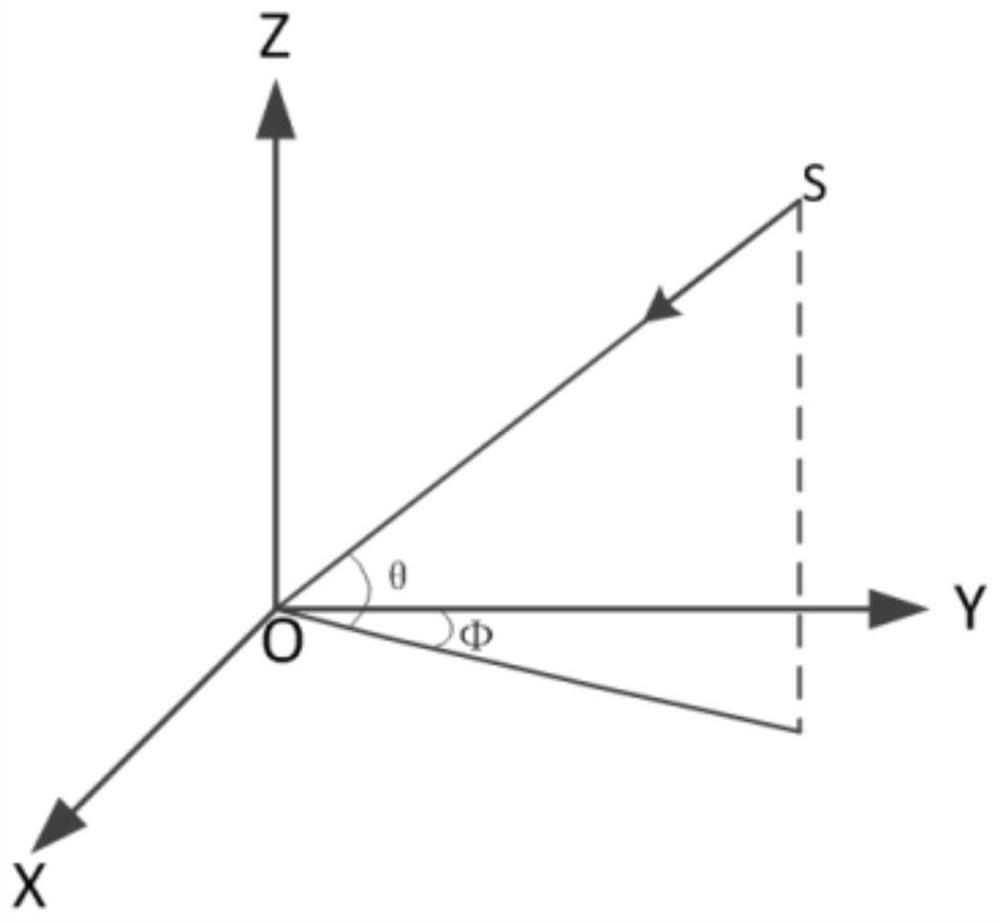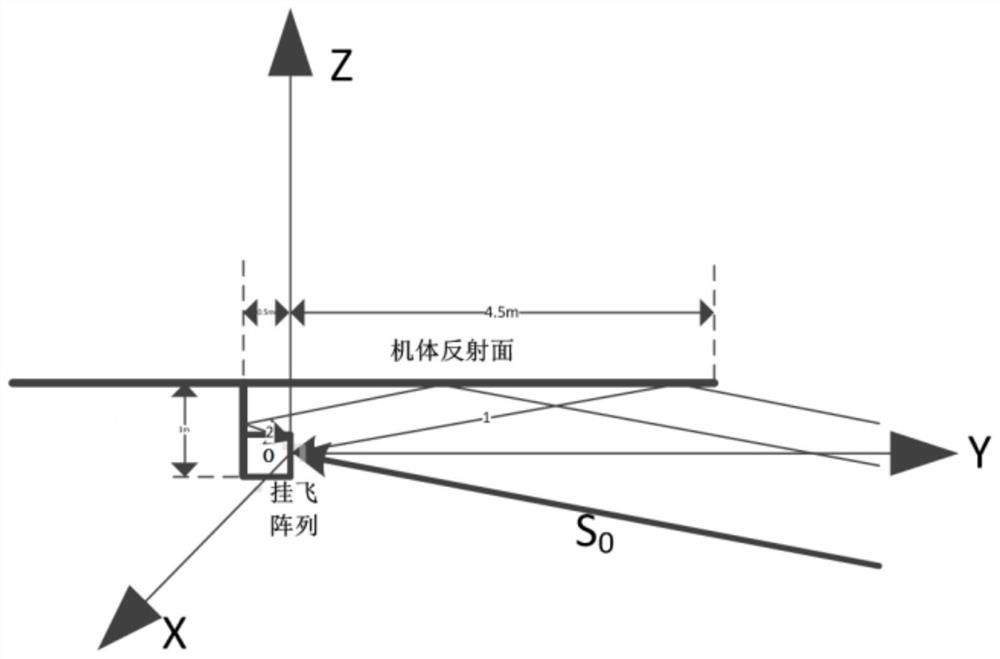Method for evaluating array direction finding precision under near-end multipath condition
A near-end and array technology, applied in the field of array direction finding, can solve problems such as time-consuming, complex modeling, and inability to intuitively analyze the influence of near-end multipath
- Summary
- Abstract
- Description
- Claims
- Application Information
AI Technical Summary
Problems solved by technology
Method used
Image
Examples
Embodiment 1
[0049] Embodiment 1: A method for evaluating array direction finding accuracy under near-end multipath conditions, including:
[0050] Step S1, constructing the array flow pattern according to the spatial arrangement position relationship of the array elements;
[0051] Step S2, setting the incident wave direction of a single signal;
[0052] Step S3, determining the reflection coefficient, the array near-end multipath signal path, the number of multipath signals and the multipath signal angle according to the relative positional relationship between the antenna array and the near-end strong scatterer;
[0053] Step S4, describing the complex vector form of the multipath signal;
[0054] Step S5, synthesizing the complex vector form of the multipath signal and the incident signal vector into a synthesized signal vector form on the complex plane;
[0055] In step S6, the synthetic signal vector form is substituted into the array direction-finding algorithm, and the array dire...
Embodiment 2
[0056]Embodiment 2: On the basis of Embodiment 1, the construction of the array flow pattern according to the spatial arrangement position relationship of the array elements includes the following two construction methods: setting a certain frequency f 0 Signal, in the darkroom environment, discretely set the incident wave space angle, and obtain the amplitude and phase parameters of each element of the receiving array; or set a certain frequency f 0 Signal, the incident wave space angle is set discretely, and the amplitude and phase parameters of each array element of the receiving array are calculated according to the array element arrangement relationship; among them, the incident space angle (Ф i , θ j ), i=1, 2,..., N; j=1, 2,..., N, Ф i is the azimuth angle of the incident signal, θ j is the pitch angle of the incident signal, i and j are the discrete points of the incident signal angle respectively, N×N angles are arranged according to the two-dimensional array, and N...
Embodiment 3
[0057] Embodiment 3: On the basis of Embodiment 1, the setting of the incident wave direction (Ф, θ) of a single signal includes sub-steps: setting a vector representation of a far-end incident signal as: u 0 (t) is the received signal gain of the array element, is the initial phase, ω 0 =2πf 0 is the frequency of the incident signal.
PUM
 Login to View More
Login to View More Abstract
Description
Claims
Application Information
 Login to View More
Login to View More - R&D
- Intellectual Property
- Life Sciences
- Materials
- Tech Scout
- Unparalleled Data Quality
- Higher Quality Content
- 60% Fewer Hallucinations
Browse by: Latest US Patents, China's latest patents, Technical Efficacy Thesaurus, Application Domain, Technology Topic, Popular Technical Reports.
© 2025 PatSnap. All rights reserved.Legal|Privacy policy|Modern Slavery Act Transparency Statement|Sitemap|About US| Contact US: help@patsnap.com


